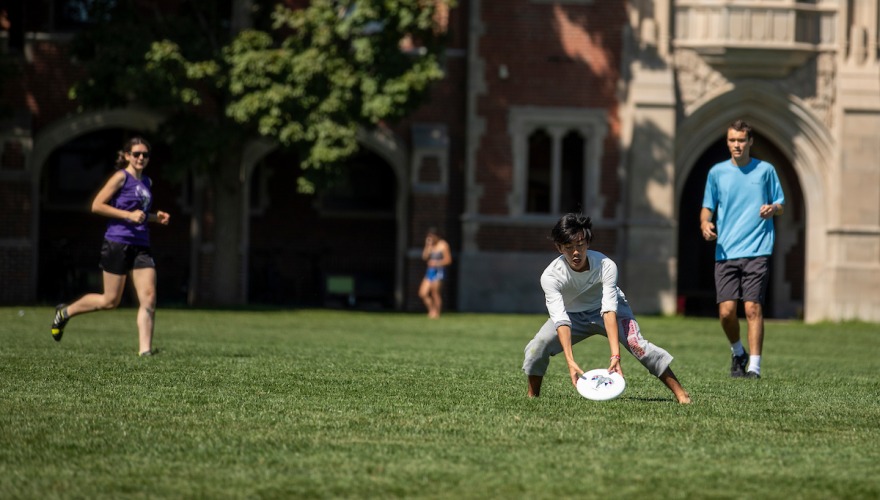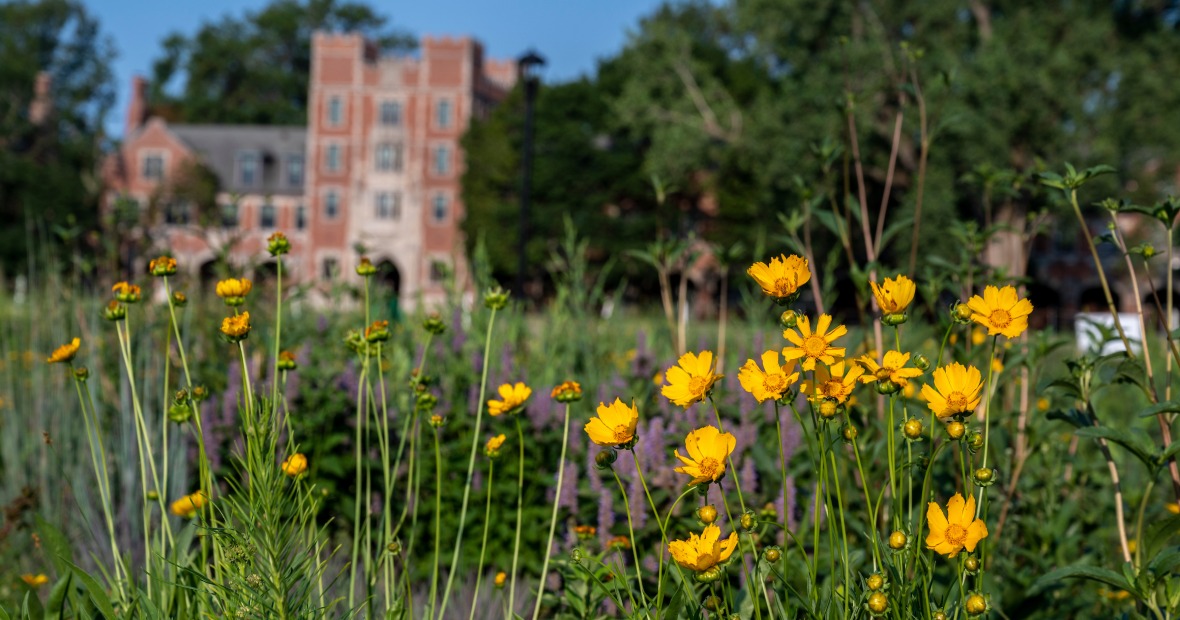Renewable Energy, Native Pollinators, Stormwater Reclamation
Without an obvious landmark such as a 280-foot-tall wind turbine, how do you know if a college is committed to environmental sustainability?
Many of Grinnell’s sustainable practices are out of sight, but thanks to an Innovation Fund grant and the help of students, faculty, and staff, they’re getting some overdue attention.
“Grinnell has a lot going on with sustainability,” says Liz Queathem, a senior lecturer in biology who’s been involved in Grinnell’s efforts for many years. “We wanted to figure out how to educate people about [sustainable practices] and make them visible to visitors to campus.”
In spring 2021, Queathem worked with Lee Sharpe, professor of chemistry, and Cori Jakubiak, associate professor of education, to team-teach Environmental Studies 120: Environmental Challenges and Responses. This one-credit class, which has a different focus each time it’s offered, gave students an opportunity to “be active participants in developing something that’s going to go up on campus,” Queathem says.
Students read about sustainability and sustainable architecture. Sharpe lectured about sustainability elements in buildings and heating. Chris Bair ’97, environmental and safety manager, took students on a remote sustainability tour of campus, visiting sites with his iPad (due to the COVID-19 pandemic, students took the class remotely).
At the Bear Center field house, for example, Bair pointed out cisterns that collect rainwater, which is used to irrigate the athletic fields and flush toilets. He climbed onto the roof of the Humanities and Social Studies Center (HSSC) to show its heat-reflective surfaces and “green” roof. The vegetation absorbs water, filters out any impurities, cools the roof, and reduces flooding in stormwater downstream from the College.
The class also learned about different kinds of signage for educational exhibits from Zebradog, a design firm that develops signage for the built environment. Zebradog also surveyed the class to learn what the students thought would be most effective for Grinnell’s objectives.
“There was a very free exchange of ideas in the classroom,” Queathem says. “Students loved creative yet simple ideas for signs, rather than insisting on touchscreens everywhere that would detract from our sustainability message by drawing power.”
The class worked hard to decide which features should be identified with signs and how the signs should be designed. They settled on a total of 10 signs. The content is being developed and refined by teams of students, faculty, and staff during the summer and fall.
During fall and winter of 2021, Zebradog will help guide the development of the signs/exhibits for the sites. They aim to have the project completed by Earth Day 2022.
One thing Sharpe hopes that campus visitors will take away from the signs is a recognition that Grinnell is committed to environmental sustainability.
“The built environment can be constructed in a way that is helpful as well as harmful,” Queathem says. “Grinnell College is accepting responsibility for good stewardship.”

One of Grinnell’s environmental sustainability projects is right under students’ feet. Below Mac Field, the green space adjacent to the North Campus residence halls, is a geothermal well field. The well field covers about 1.8 acres and contains 201 vertical bores, which are about 6 inches in diameter and 280 feet deep.
Inside each well is a 1-inch, U-shaped pipe that’s surrounded by thermal-conducting grout. Each pipe connects to a whole system of pipes that runs beneath 8th Avenue to the HSSC basement, where the piping connects to a geothermal heat-pump chiller, which provides both heating and cooling for the HSSC.
Water from the HSSC is pumped through the pipes and into each well. As the water moves through the U-shaped pipe, it either exports heat to the soil (this is cooling mode) or it absorbs heat from the soil (heating mode) because the earth’s temperature remains stable at 50–55 degrees.

